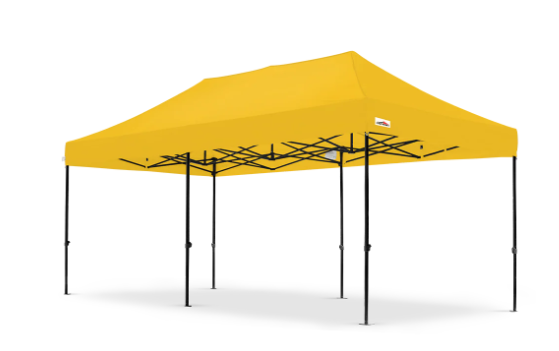
Planning for retirement can feel overwhelming, can’t it? With so many choices, strategies, and expert opinions, knowing what will truly protect your future savings isn’t always clear. But here’s a tip that never goes out of style: diversification. It’s a strategy that sounds complex but is, at its heart, all about not putting all your eggs in one basket. Let’s dive into what that really means and why it’s your best friend when it comes to building a resilient retirement portfolio.
What Is Diversification, and Why Should You Care?
Imagine you’re walking a tightrope. You’d want a safety net beneath you, right? Diversification is that safety net for your retirement savings. Instead of relying on one single investment, like stocks or bonds, to carry your financial future, diversification spreads your money across different types of assets. The idea is simple: if one investment dips, others might balance it out, keeping your portfolio steady.
So, why does this matter? Because markets are unpredictable. One day, tech stocks might be the star of the show; the next, they could be in free fall. Diversification helps smooth out those ups and downs, giving you a more balanced and secure financial future.
What Should a Diversified Portfolio Look Like?
When we talk about diversification, we’re talking about including a mix of asset classes, and different “categories” of investments. Here are the big players:
- Stocks: These are the growth engines of your portfolio. They can deliver high returns, but they also come with more risk.
- Bonds: Think of bonds as the steady, reliable counterpart to stocks. They don’t grow as fast, but they’re less volatile.
- Mutual Funds and ETFs: These are bundles of stocks or bonds, offering built-in diversification.
- Real Estate: Whether through direct ownership or REITs (real estate investment trusts), property can add stability to your portfolio.
By mixing these assets, you create a balance. Stocks bring the growth potential, bonds add security, and real estate or mutual funds round things out. But here’s the kicker: how you mix them depends on your personal goals. Are you nearing retirement? You might lean more heavily on bonds. Have a few decades to go? Stocks could take the lead.
Diversification Isn’t Just About Spreading Risk, It’s About Managing It
Let’s be honest: no one can predict the future. Markets have highs, lows, and everything in between. Diversification steps in as your insurance policy. When one part of your portfolio takes a hit, others might hold their ground or even gain value.
For example, let’s say tech stocks take a nosedive. If you’ve also invested in bonds or real estate, those assets could help stabilize your portfolio. This balancing act ensures you don’t lose sleep over market volatility.
It’s not just about playing defense, though. A well-diversified portfolio also positions you to seize opportunities. By investing in different sectors, industries, and asset classes, you’re more likely to catch a rising star, even when some areas are underperforming.
The Role of Flexibility in Diversifying Your Retirement Savings
Speaking of flexibility and diversification, have you ever thought about what When consolidating old retirement accounts, it’s important to explore tools that allow greater flexibility in your investment strategy. For example, rolling over a 401(k) into an IRA Rollover can expand your options significantly. Unlike a typical 401(k), which often restricts you to a narrow set of investment choices, an IRA rollover opens up the door to a broader range of opportunities, from mutual funds to international stocks.
This level of control allows you to build a portfolio tailored to your goals and adjust it as your needs evolve, ensuring better diversification and long-term resilience. This flexibility, offered by a rollover IRA, is especially valuable for adapting to market changes or shifting personal priorities, as it allows smoother transitions to more conservative investments as you approach retirement to reduce risk. With access to a wider variety of low-risk options like bonds or dividend-paying funds, you can fine-tune your portfolio to maintain steady growth while safeguarding your hard-earned savings. This adaptability ensures your investments work for you, no matter where life takes you. versatile portfolio. It’s a small step that could lead to big gains down the road.
Avoiding Common Diversification Mistakes
While diversification is powerful, it’s not foolproof if done incorrectly. Here are a few pitfalls to watch out for:
- Over-diversification: Believe it or not, you can go overboard. Owning too many investments can dilute your returns and make it harder to track your progress.
- Chasing trends: Just because a certain sector is hot doesn’t mean it’s a good long-term bet. Diversification is about balance, not jumping on the latest bandwagon.
- Ignoring rebalancing: Markets change, and so does your portfolio. If one asset class grows disproportionately, it might be time to rebalance.
Think of diversification as cooking a great meal. Too much of one ingredient can throw off the flavor, but a thoughtful mix creates something extraordinary.
How to Maintain a Diversified Portfolio
So, you’ve built a diverse portfolio. Now what? Keeping it in tip-top shape requires a bit of maintenance. Here’s how:
- Revisit Your Goals: Your needs change over time. Maybe you’re five years closer to retirement or have a new financial priority. Adjust your portfolio to reflect those shifts.
- Rebalance Regularly: This is like tuning up a car. If one part of your portfolio grows faster than others, it could throw off your balance. Periodic rebalancing keeps things on track.
- Stay Informed: Markets evolve, and so do investment opportunities. Keep an eye on trends, but don’t let fear or hype dictate your decisions.
Final Thoughts: Building a Future You Can Count On
Retirement planning doesn’t have to be stressful. With diversification, you’re not just preparing for the future, you’re actively protecting it. To manage risk and ride out life’s uncertainties, it’s about spreading your investments across different asset classes, managing risk, and using flexibility like an IRA rollover when needed. So, what’s stopping you? Start assessing your current portfolio and take steps to diversify today. Because when it comes to retirement, a little preparation now can make all the difference later.
Write and Win: Participate in Creative writing Contest & International Essay Contest and win fabulous prizes.


